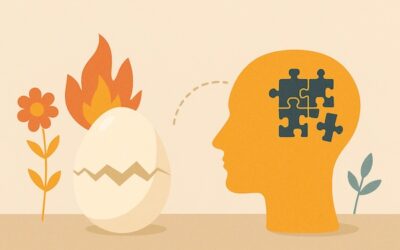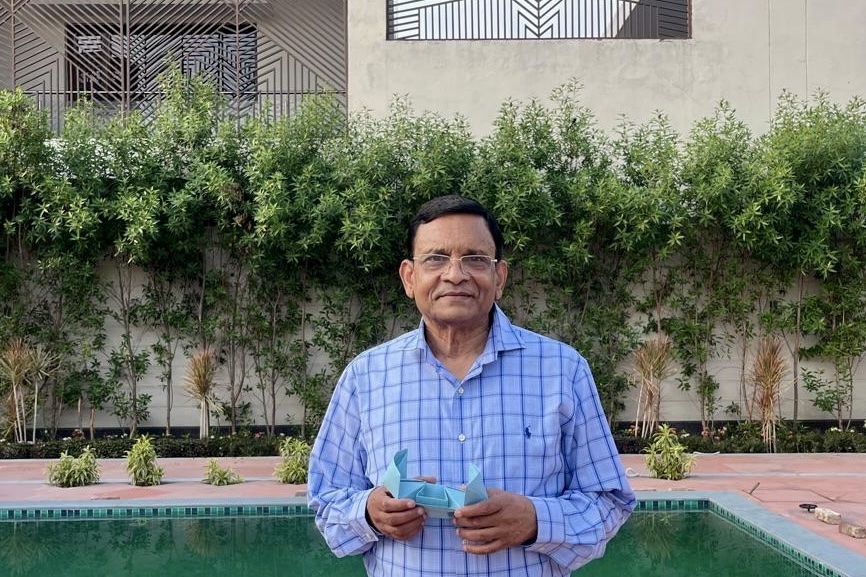My name found its place in the world through Wings of Fire, the autobiography of Dr A.P.J. Abdul Kalam, who invited me to walk beside him as co-author. When it was first published in December 1999 by Universities Press, the book did not immediately take flight. I...

Technology-Assisted Happiness
Technology-Assisted Happiness
There is a vast amount of literature that attempts to address the problems of unhappiness, and every sect and cult promises solutions to its adherents. Sufferings, miseries and conflicts, however, refuse to go away. Ask anyone in a mall, park, or sitting in front of a television and you’re likely to meet someone in search of happiness. Even the richest, the best and the most accomplished people occupying positions of power and influence are unhappy; so what can one say of those who struggle just to make ends meet?
‘Khush Raho’, which translates to ‘be happy’, is a traditional benediction in North India, the region where I was born and raised. It is widely believed that joy and well–being are the most valuable aspects of life. Happiness has a profoundly positive impact on various aspects of life. Happy individuals tend to have stronger and more satisfying relationships, enjoy improved physical and mental health and lead fulfilling and enjoyable lives.
The area of positive psychology has given rise to numerous divergent perspectives regarding what it means to be happy. We can’t seem to find happiness. No matter how hard we try, nothing—regardless of what happens—ever seems able to be able to make us truly happy. Doing what you enjoy, being surrounded by people you like and love, and not worrying about what lies ahead are often seen as the hallmarks of happiness. Yet, when I watch my grandson Agastya and other children completely immersed in computer games, it makesme wonder whether humanity has ever truly cracked the code to happiness.
We live in two worlds—the external world of our observations and experiences, and the internal world of our thoughts and feelings. Money, material possessions, status and acclaim are ‘extrinsic’ pleasures—those we seek when we look forfulfilment outside ourselves. Regrettably, the joy of newly discovered contentment does not last long. The more we try to‘find’ happiness, the more elusive it becomes. This phenomenon, which is a significant obstacle to experiencing lasting happiness, is referred to by psychologists as ‘hedonic adaptation’.
Conversely, when we strive to make ourselves happy, we direct our attention towards pursuits that generate pleasant emotions, nurture inner strengths, and foster social connections through our active engagement with the world. Neither acclaim nor financial reward is our goal. Simply enjoying ourselves while being completely absorbed in our work is enough. Regardless of our life circumstances, we can always find happiness by consistently engaging in self-rewarding, meaningful hard work.
It goes against the grain of what most of us have been led to believe—that our happiness is directly proportional to how easy life is and that we require life to be a specific way to be happy. The correlation between perseverance, intrinsic motivation, and long-term enjoyment, however, was foretold in the Shrimad Bhagawad Gita when Lord Shri Krishna declared, “आत्मनि एव आत्मना तुष्टः स्थितप्रज्ञः तदा उच्यते“, meaning that one whosemind finds contentment in the Self alone, is a man of steady wisdom (Shloka 2.55).
Know yourself as the sole provider of your happiness. ‘Behave’, an outstanding book written by Robert Sapolsky, a Russian-American professor of biology and neurology at Stanford University, establishes the fact that happiness is rooted in biology. In varying degrees and combinations, the neurochemicals and physiological sensations produced by our brains and bodies are what we perceive as pleasure, enjoyment, contentment, love, ecstasy, joy, delight, and every other form of happiness.
Does this imply that these feel-good chemicals and experiences can be accessed at will? Can we, through quantifiable autotelic actions, consciously trigger them ourselves?
Reading Sapolsky’s book, I learnt that our bodies can generate an adrenaline boost when we challenge ourselves, such as doing a task in less time than usual. This excitatory hormone boosts our confidence, energy and motivation. When we undertake something very challenging, such as completing a physical exercise or solving a puzzle, our brains release a powerful combination of norepinephrine, epinephrine (also known as adrenaline) and dopamine. When we experience all three of these neurochemicals simultaneously, we feel elated, proud and content—happy on the inside.
Another insight the book offers is that our brains are filled with dopamine, a chemical linked to pleasure and reward, whenever we succeed in making someone laugh or smile. The effect is amplified when we ourselves share in the laughter or smiles. The hormone oxytocin is released into the bloodstream whenever our physical movements are synchronised with those of another person, for example, in a sporting event or a dance. We experience euphoria and joy because of this neurochemical. The vagus nerve, which causes us to feel emotionally ‘choked up’ in our chests and throats, and the pilomotor reflex, which gives us pleasant chills and goosebumps, are both stimulated when we seek out what we might call ‘powerful’ and ‘moving’ stories, media, or live performances.
Not many of us consciously seek to activate these systems, and what we do unconsciously is outright dangerous. Addictive medications and alcohol, tasty but harmful food, compulsive shopping, and countless other shortcut–happiness behaviours eventually lead to their diminished effectiveness, financial ruin, or even death. A culture of consumerism, based on the false promise of extrinsic rewards, is leading people onto a global hedonic treadmill—leaving them gasping and, in some cases, collapsing.
In her outstanding book, ‘Reality Is Broken: Why Games Make Us Better and How They Can Change the World’, young computer-game designer Jane McGonigal (born 1977) claims that the solution to this futile struggle is at hand. There is an infinite supply of resources for creating happiness if we prioritise intrinsic rewards over external ones. According to her, people experience misery and suffering in their day-to-day lives because the four-dimensional intrinsic rewards provided by games are often unavailable in real life, particularly in places such as families, workplaces and public spaces. She identifies these four rewards in everyday activities, which include satisfying work, experiencing success, social connection and finding meaning. These four forms of intrinsic rewards are the bedrock of a perfect human experience.
Computer games can be designed to offer these four intrinsic rewards. It is no wonder that the wisdom of human evolution is unfolding, and children are discovering it for themselves, even without being explicitly taught about it. Ultimately, playing games is a quintessential example of autotelic behaviour. Whenever we play, it is always out of pure enjoyment. Playing a game is the most valid form of ‘Nishkama Karma’, i.e., desireless action (provided it is not being played for money). Where else in life do you see the winner and loser shaking hands at the end of the game, relaxing together over a meal, leaving behind their victory and loss?
Games offer a structured way to activate the right regions of the brain. Good games reliably, affordably and safely provide us with the four things we desire most. Most importantly, they demonstrate that players aren’t trying to escape reality through gaming; instead, their real lives are becoming more fulfilling as a result of their efforts. Some people engage in gamblingby playing games designed for that purpose, but that is a total misuse of the modality.
Don’t scold your children and grandchildren for playing computer games; rather, join them and pick a few to get rid of your boredom. This will reactivate the ageing mind and restore the decline and deficit in hormone and neurotransmitter production by the body. You can indeed create happiness for your consumption with the help of some excellent video games. Like everything else, moderation is the key here also. Too much of everything is always harmful, and games are no exception.
MORE FROM THE BLOG
From Wings to Light
Maya, Science, and the Dance of Consciousness
For as long as I can remember, a quiet thought has drifted through my mind in the still hours between dusk and sleep: what if life itself is a simulation—an elaborate stage play in which we, vivid though we seem, may yet be characters animated by some higher...
Unboiling the Egg
The phrase ‘unboiling the egg’ evokes the impossible: once heat has transformed the contents of an egg, there is no turning back, no means of returning the yolk and white to their original, separate, fluid states. This commonly used analogy has helped convey the...








